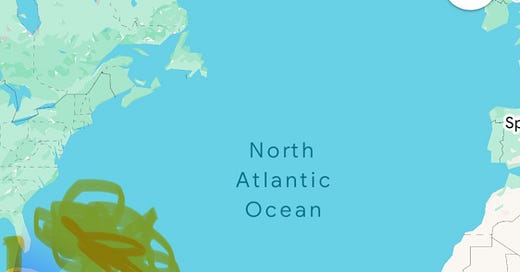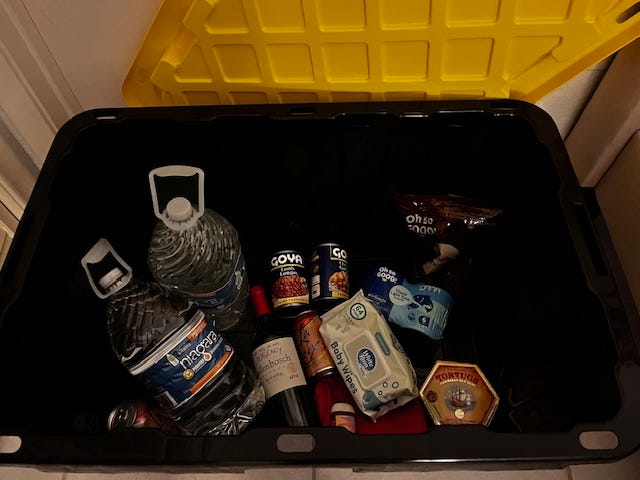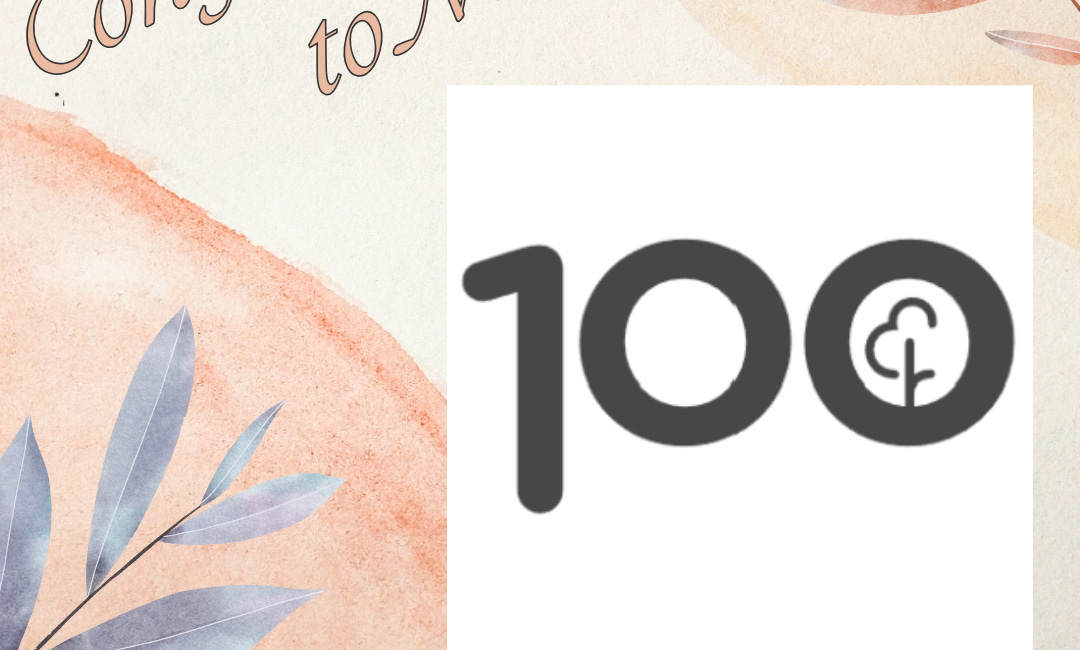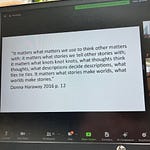(NOTE- Excuse the error on the audio stating Beryl hit in June instead of July. I’ve recorded this audio too many times to go back and re-edit it!)
As I sat down to write this article, I found myself distracted, searching for trips that I might take, messaging friends, watching a clip of a centipede being eaten by it’s offspring. Rather than getting frustrated and critical with myself, I recognised that a part of me was finding it difficult to come to the table with the topic I’d been planning to write about. I wanted to push it away, but I can’t.
The Caribbean Hurricane season started June 1st, and it is with us for six months.
‘You’ve done one season’, someone recently said to me dismissively, as if that prevented all future anxiety. What it signalled perhaps was their way of managing uncertainty, and loud and clear the message was heard that I was to expect no empathy from their direction. It struck me as strange, and took a little time to process. I pondered the apparent unwillingness to acknowledge our vulnerability to the elements, or that actually, when it comes to hurricanes, some degree of fear is rational.
As I start reading and writing about hurricanes an intrusive voice pops in my head singing the tune of the Christmas Coca Cola advert…
hurricanes are coming, hurricanes are coming, hurricanes are coming.
Ok. That’s not helpful.
I imagine putting the voice in a room like an incalcitrant child, shutting the door, and walking away.
I try again, aiming to walk the line between avoidance, silliness, and overwhelm, knowing that it is entirely normal to struggle with it. Every year the government shares information about being hurricane ready, with lists of items to have in stock, questions to invite thinking about emergency planning, and every year the hurricanes come, and the panic buying many of us will only know from the Pandemic, happen as a storm approaches. We are all human and have different ways of coping with threats, anxiety, and uncertainty!
No matter what gets projected onto us, or how others think we should be feeling or reacting, our emotions are sources of information. They are trying to tell us something, to draw our attention to something we might need to act upon. Our tendency is to push these feelings away, to hide from what we are afraid of, or pretend it isn’t happening. This is a common survival strategy, as we do not want to engage with the discomfort of difficult emotions. But it is not always the most wise course of action. Noticing what we are afraid of allows us to tune in and ask what we need. It might allow us greater understanding, compassion, tolerance of the discomfort, and to generate helpful solutions from a wise rather than a reactive place. So, I have spent the past couple of weeks paying close attention to what I feel, and considering what I need. The obvious answer is, to feel safe, and one of the ways in which I am trying to do that, is to take precautions and to be hurricane ready.
My first season
The UK was deep in Election Season when I secured a job in the Cayman islands. By June 2024 something stalled the process of approval for getting a licence to practice, and I hadn’t made the final steps such as signing my home away to tenants, and booking my flights and a place to live. It was an uncertain time.
We entered the final week before the General Election and the UK news becomes myopic. The Sunday Telegraph, Sunday Express and Mail on Sunday led with Rishi Sunak’s warning that a Labour government “would bankrupt people in every generation”. The Daily Star and Sunday People were banging the usual drum of hope for England winning the Euro’s. They didn’t. The Observer quoted Sir Keir Starmer’s promise to “relight the fire” of optimism and hope among the British people (I hear that fire went out pretty quickly), alongside a photo of Cindy Lauper performing Glastonbury. The attention was firmly on ourselves (Source, Kent Online).
Meanwhile, many miles away, a tropical wave had been making its way from off the coast of Africa since June 25. This became a hurricane on June 28 in the warm water of the Atlantic Ocean extending from the west coast of Africa to the east coast of Central America, and up to and including the Gulf Coast of USA. This is referred to as the Main Development Region (MDR), or Atlantic Basin. The hurricane was called Beryl.
I followed Beryl’s course for a week, as she intensified over this region, hitting the Lesser Antilles along its path, then heading towards the Greater Antilles, of which the Cayman Islands is part. I saw the shifting on the website from Category 4 to 5 to 4 (based on strength of windspeed), and The Cayman Islands had their hurricane warning on 2nd July, with Beryl expected the next day. I don’t recommend that you do this, but I watched the beach cameras on Seven Mile Beach, curious to see what the weather was like. I was surprised, and a little alarmed that the loungers and parasols were still up, with people sunbathing on the morning of 3rd July. Later, they were gone, and later still, the webcams were switched off.
WTF am I doing, I thought to myself many times that week. There’s still time to pull out.
My rough diagram to show the Main Development Area.
I clearly didn’t, and strange as it is to enter the season from a place of greater knowing, I’m glad to have come.
The blue dot shows my current location, The Cayman Islands, and the orange stretch of water is the Atlantic Basin, containing the entire Caribbean region. Knowing facts does not have any impact on the likelihood of a serious hurricane hitting the Caribbean, but strangely provides a way of containing the anxiety that can come with the uncertainty.
So, in case your Geography studies are well behind you and those neurones are not firing brightly today, let me explain the conditions required to create a hurricane…
The surface temperature of the ocean needs to be a minimum 26.5 degrees C.
There needs to be sufficient force from the Coriolis effect, between 10°N and 20°N to create the ‘tight circulation’, to spin a hurricane.
These conditions occur between June and November.
Last year was filled with news stories that the hurricane season was going to be a busy one, that global warming means we will have earlier and bigger storms because the water temperature is hotter. We’re already hearing the same things, and it makes a part of me want to pack up my bag and head home to a familiar British summer of drizzle. But this is my life for now, and I need to find a way to work and live, as far as possible, within my window of tolerance.
What I learned today is that an initially active season might become quiet later. Hurricanes churn the waters and colder water is brought up, which lowers the surface temperature of the area the hurricane passes through. This can cool it by up to 5–10 °C, so the conditions are not as favourable for subsequent disturbances or hurricanes that pass over, meaning that they weaken or dissipate (Seeing into the Heart of a Hurricane". Earth Observatory. 12 October 2000).
The 2024 Hurricane season, summed up by Wikipedia-
The season featured 18 named storms, 11 hurricanes, and 5 major hurricanes.
It was the first since 2019 to feature multiple Category 5 hurricanes.
The week after I arrived on island Hurricane Francine brought a lot of wind and rain. Raphael caused me to leave my home and go and stay with a friend inland and ended up being little more than heavy rain in Grand Cayman. More memorable was Helene, which brought heavy rains and winds, rattling the hurricane shutters of my apartment, and later causing devastation in Florida and Southern USA with winds as high as 140 mph. This is the kind of event that we hope doesn’t directly hit us.
I was further confronted with the reality of hurricanes as soon as I arrived on island. September 11th is a date associated with additional grief in Grand Cayman, with last year marking 20 years since Category 5 Hurricane Ivan devasted the island with winds reaching 165 mph. A letter to the British government, sent by McKeeva Bush, details what life was like the month following the hurricane. Miraculously only two people died. The financial costs are quoted as $2.86 billion (equivalent to $4.76 billion in 2024) or 183 percent of the GDP, but the environmental and psychological costs are never quantified, and often felt for years.
At the Red Sky at Night cultural event earlier this year, a short film was shown, depicting a family on the day that Ivan hit, more impactful for it’s strange positioning between displays of dance and poetry. The atmosphere suddenly changed, with a silence that seemed to scream. This is part of life in the Caribbean, the threat of hurricanes sits alongside dance and everything else, casting a constant but unspoken summer shadow over supposed paradise.
My friends and I left the theatre straight after the film, and people who had lived on island for many years shared how the film had brought their own experiences back to them. One had been a young child, and both their memories felt very live, 20 years later.
How does a mother protect her child? Can she even protect herself?
There is often little time and space to process all that needs to be processed during life threatening events like this. The priority is survival, then rebuilding. Psychological recovery can be neglected. The silence filling the theatre contained past pain, and a heaviness that these things could happen again.
I’ve only had half a season, but each time a hurricane developed, I observed people praying for a twist in the trajectory to take the storm away, with the unspoken awareness that this potentially puts it in the path of others. How small this part of the world suddenly seemed. How close our neighbours.
I recall the weight of relief after Helene left, having ravaged our beautiful beaches, leaving fallen palms, and floodwater, and watching the news of the devastation further along her path. I didn’t write directly about it at the time, mentioning Helene almost in passing after she passed, as if I paid it little mind. Instead, I wrote about compassion, and Metta meditation, with reference to the cockroaches that I found in the pool. It was too frightening to talk about the big stuff happening all around me, and I didn’t want to ‘get it wrong’ (as if anyone in Cayman was reading my words at the time to be affected by them!). Instead I focussed my attention on the small stuff, the nature that connected me with wonder, and a sense of safety. The decision about whether to save the life of a cockroach was within my control, whilst almost everything else seemed out of it! Writing about my experiences with humour was a way of grounding myself. I was held by Gaia, even whilst she threatened to flatten me (see links to those first hurricane season posts below).
So I suppose I write now from a place of (slightly) greater stability. I’ve done one half season, as I’m told. This doesn’t erase the anxiety, but it allows me to engage more fully with the reality of the risks of hurricanes, and consider what I need to do to prepare for them. So, putting aside my false shield of avoidance, I have started to create my box of hurricane supplies. I am deciding what I need, and what I might do without. I am writing my hurricane plan, in my head, at least.
My grand plan is not to be on my own. I spent the unexpected national tsunami warning sharing a bottle of red wine, over-eating crisps, chatting via a video call with the soothing accompaniment of a Jane Austen BBC adaptation on the TV in the background. It might not have the gold standard RCT evidence base to back it up, but it is a tried and tested anxiety management technique. I know that I need to do something similar in the event of a hurricane. Another one of my coping tools is humour, so an emergency bottle of red wine, complete with (self made) funny label is one of the first things to go in my emergency box. We’re in June, and reading up about Beryl reminds me that storms might soon be forming.
I’m walking the line, trying not to raise my alarm, or yours, so here’s a picture of my emergency box. I also need to have a smaller grab bag, with my vital documents, but that’s about all the hurricane reality I can handle for today.
Tonight I’m off to a noughties night, my first party night since being here, and hopefully filled with happier memories for Caymanian’s from that decade.
I must also remember to get a tin opener.
Celebrating the Glimmers
Whilst big and significant things are happening in the world, with life altering effects on people, the lens with which I choose to focus here seems relatively small. Willow Blooms is one way in which I seek and encourage connection, creativity and depth to enhance our wellbeing. I am not blind to the bigger things, but my Substack writing brings me joy…
Compassion Fail or Fatigue
Last week I wrote about my heroic rescue of the bees in the swimming pool, highlighting my astounding levels of compassion and kindness. Everything wants to be loved, I cooed, and here I am rescuing the bees..!
















Share this post